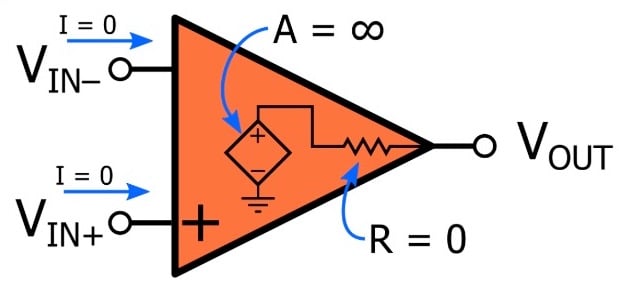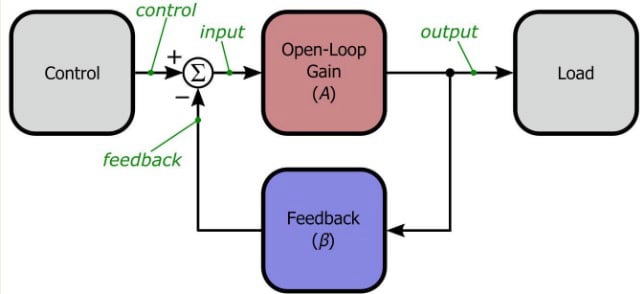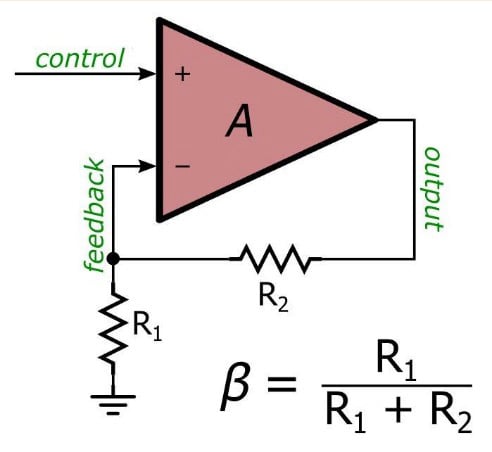以前的视频教程提出了一个理想化的操作AMP模型,其中输入具有无限阻抗and the difference between the two input voltages is multiplied by an infinite gain and delivered via zero resistance to the output terminal, without any loss of performance as input frequency increases.

该模型是一个主要的简化,因为在实际运算放大器中
但是,重要的是要理解,理想化的模型并非孤立地存在,因为操作放大器不打算用作“开环”放大器。相反,我们几乎总是将操作放大器纳入“闭环”配置中,即一种配置,负面反馈会创建从输入到输出再到输入到输入的连续信号路径。
术语“反馈”是指获取输出信号或输出信号的一部分,然后将其返回(即将其馈回)到系统的输入中。反馈可能是负面的或正面的,但是负反馈更为普遍。我们通过获取输出信号或输出信号的一部分来创建负反馈,并将其与输入信号结合减法。

(要彻底探索此主题,请参考AAC的负反馈系列。)
这种简单的技术可以将运算放大器转换为易于使用的多功能组件,该组件与其理想化的模型更加一致。
As you can see in the diagram above, the critical parameters in a feedback system are the open-loop gain (A) and the feedback factor (β). The feedback factor corresponds to the portion of the output that is fed back to the input. For example:
The overall gain of the negative-feedback system, called the closed-loop gain (\(GCL \)), is calculated as follows:
\ [g_ {cl} = \ frac {a} {1+a \ beta} \]
但是,如果我们假设A很大,则可以在此公式中进行重要的简化:
\[G_{CL} \approx \frac {1}{\beta}\]
This tells us that as long as the amplifier’s open-loop gain is very high, the overall gain of the system is determined by the components that are used to减少幅度输出信号将其馈回输入之前。
运算放大器使我们很容易创建高性能的负反馈放大器系统: subtraction is achieved by connecting the feedback signal to the inverting input terminal, and the op-amp’s extremely high gain allows us to use the simplified \(G_{CL} \) expression without worrying about the difference between the exact closed-loop gain and the approximate closed-loop gain. (For example, if A = 105 and β = 0.5, the approximate \(G_{CL} \) is 2 and the exact \(GCL \) is 1.99996.)
在这一点上,我们几乎准备好设计基于操作AMP的负反馈放大器。我们知道总体增益将等于反馈因素的倒数,但是我们如何创建反馈因素?
如上所述,反馈因子对应于输出信号振幅的降低,我们可以简单地通过添加一对电阻来减少信号的幅度:

Here we are using a basic resistive voltage divider to create a feedback factor of \( \beta = R_1/(R_1+R_2) \). If, for example, we have \( R_1 = R_2 = 1 k\Omega \), β = 0.5, and this would result in an amplifier with an overall gain of \(G_{CL} = 2 \). We can easily adjust the gain by choosing different resistance values, and if necessary we can make the gain very accurate by using high-precision resistors.